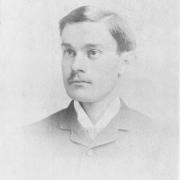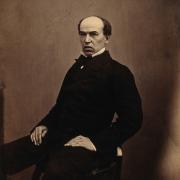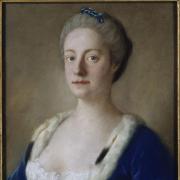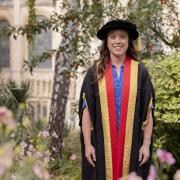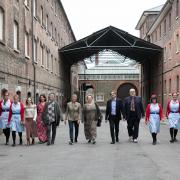While some of us call nettles and dandelions weeds, others think of them as lunch. We meet Kent’s professional foraging tutors

Since a marked rise in popularity more than 15 years ago – when TV chef Hugh Fearnley-Whittingstall was filmed cooking roadkill and picking through hedgerows for his tea – the cult of wild food has continued to grow.
Noma, the Michelin-starred restaurant in Copenhagen which has created a whole movement around gourmet foraging, is frequently voted the world’s best, and British chefs too have developed a love of wild ingredients.
In Kent, Chartham-based Forager Ltd, which has been supplying wild food to restaurants for 15 years, has recently moved into the consumer market, launching foraged food boxes.
Delivered weekly to your door, they aim to introduce subscribers to totally wild ingredients and provide information with recipe cards and YouTube video clips.

Lack of knowledge is, after all, the biggest hindrance to would-be foragers. Having the ability to look at a piece of land and recognise the edible things and the inedible things is something which only comes with research and a lot of experience.
And it’s not even as simple as picking something and eating it. There are several different uses for many plants and preparation is often complicated.
The best option for newbies is to find a professional foraging tutor and go along to a course. There are dozens to choose from across the county and their focus changes with the seasons.

• Michael White:
Rural Courses, Frittenden
Michael White from Rural Courses in Frittenden, near Cranbrook, began his business after deciding that life in the city was not for him.
“I was raised on a smallholding in Kent so my parents were small-scale farmers and we foraged as part of our lifestyle,” he says.

“My love of the countryside just grew as I lived in London and I got the direct comparison. I got more interested in self-sufficiency as a way of avoiding a typical route into employment.
“When I finished my studies I left London and became as self-sufficient as possible – and foraging was a big part of that.”
So rather than setting out to become a foraging tutor, he learnt his trade as a means of survival. After he moved back to the countryside, Michael attempted to reduce his cost of living so much that he would only have to earn a minimal amount of money.
“I’ve always been a practical person and a hard worker, so that’s where the courses came in. The courses are a way of using my knowledge to earn an income through what otherwise could be a very difficult way of life.”

Michael finds that many of his customers come with a keen interest in the countryside already. And there are those he calls ‘armchair foragers’ who have developed an interest through seeing foraging on television.
“Which is good,” he says, “but sometimes they’ve been inspired by these very hammed-up foraging expeditions, where around every corner lurks an absolute delicacy. It does the likes of me a slight disservice because it gives people unrealistic expectations.
“The nature of foraging is that it involves a bit of work and getting out there.”

• Lucia Stuart:
The Wild Kitchen, Deal
Another Kent forager is Lucia Stuart, who has been running The Wild Kitchen in Deal since 2012. Living by the sea, Lucia doesn’t take her foraging expeditions to the woods or hedgerows but along the coast.
“My father was an amazing cook and foodie,” says Lucia.

“He created delicious things in my childhood, like dandelion salad with lamb chops roasted on a wood fire, sorrel omelette and nettle soup.
“I grew up gathering food that grew wild, not just because it was ‘wild’ but because it tasted wonderful and it was fun to collect.”
Having worked as a chef in London and owned a rural café in the south of France for 10 years, she increasingly turned to wild food. An experimental cook, Lucia leads coastal foraging walks which finish with a gourmet feast back at her Deal townhouse.
“The closer we can connect the food to its origin, the better,” she says. “When I am foraging in all the different landscapes in Kent – the White Cliffs, mud flats, rock pools, the seabed, the seashore –

I am never happier. I see this in my customers as well. It’s hard to lure them off the landscape sometimes.”
Knocking up anything from simple wild oysters and seaweed to the exotic-sounding chocolate-covered beech leaves and lilac blossom Turkish delight, Lucia says Kent always has something delicious to offer.
“Spring brings tender greens – wild garlic and juicy stems such as Alexanders. Colourful seaweeds absorb sunshine which they metabolise into healthy minerals. Late spring brings flavourful flowers and coastal leaves such as wild spinach. Summer sees the coastal succulents such as samphire.
“These autumn months bring magnificent berries, seeds for spice, and sweet shellfish – fat mussels and large oysters.”
• Gary Johnston and Nicola Clowes:
Jack Raven Bushcraft
But it’s not just about finding wild food. One of the foraging courses run by Gary Johnston and Nicola Clowes of Jack Raven Bushcraft focuses on finding natural herbal remedies. The pair have been running the business from their base at Westwell, near Ashford, since 2011.
“We forage in a couple of different ways,” says Gary. “For eating and for making traditional herbal remedies.
“We run foraging for edible plants in the spring and summer and then move onto fruits and berries in the late summer and then fungus in the autumn.
“We forage for plants for herbal uses from April to September as different plants come into flower at different times of year.”
Nicola is a qualified herbalist, as well as having 30 years’ experience as a nurse. She takes clients on walks around hedgerows, meadows and woodland to look at the many plants and trees that have traditionally been used by herbalists. These include plantain, St John’s wort, yarrow, dandelion, hawthorn and chickweed.
“She looks at how to positively identify them and tell them apart from any potentially dangerous lookalikes,” says Gary. “And, after a wild food lunch, we try out various infusions and decoctions before making some ointments.”
Of course it’s not always safe to go foraging without someone knowledgeable. Many dangerous plants have been mistaken for edible ones in their time – most famously hemlock, which is often taken for cow parsley.
Mushrooms have a bad reputation too, with everyone seeming to have a story about ‘a friend of a friend who poisoned himself with wild mushrooms’.
Michael White’s advice on safety is simple. “Start small by learning about a manageable number of plants and fungi that you can safely identify, then gradually add to your repertoire each year.
“Always be 100 per cent sure before you eat anything and make sure you work with a decent identification book or resources on the internet. Best of all, get personal experience and learn from someone more knowledgeable than you.”
Lucia Stuart adds: “There are old foragers and there are bold foragers, but there are no old bold foragers, as they say.”
All the professional foragers agree that wild food is more nutritious than cultivated vegetables, which are often grown purely for their looks.
At its deepest level, foraging is about understanding nature and tapping into our ancient hunter-gatherer instinct. It’s no coincidence that fans of this way of life are also often environmentalists. It’s hard not to be concerned with the environment when you’re spending so much time out and about in it.
“Foraging is about building a connection to the natural world around us,” says Gary Johnston.
“It leads us to understand where our food traditionally came from and builds an appreciation for the wonderful environment around us. If people appreciate the environment, they’re going to be more inclined to help to protect it. Which can only be a good thing.”
Top tips
• Always forage safely and responsibly
• Avoid private land
• Only take what you need
• Never pick any wild plant or fungi unless you can guarantee you have correctly identified it
• Be aware of pollution risks like pesticides
Find out more
Visit Forager Ltd at www.forager.org.uk for information on their wild food subscription box
Visit www.ruralcourses.co.uk for details of Michael White’s courses
Visit www.thewildkitchen.net for Lucia Stuart’s monthly courses (Berry Bonanza on 21 October and Shellfish Special on 3 November)
Visit www.jackravenbushcraft.co.uk for Gary Johnston and Nicola Clowes’ foraging and bushcraft courses






